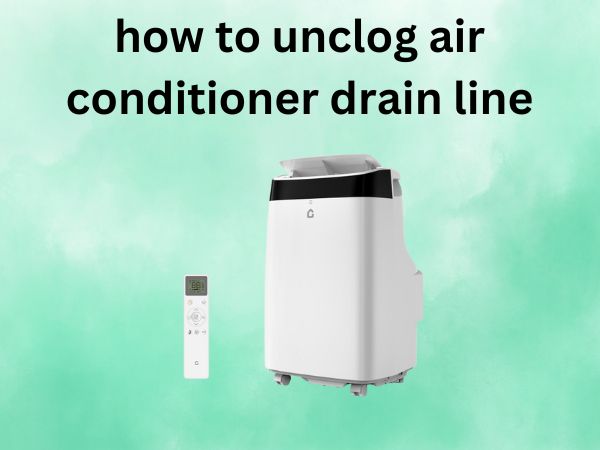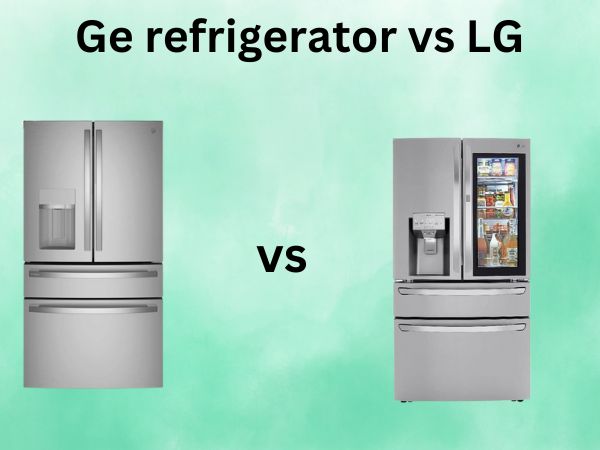How to Unclog Air Conditioner Drain Line [A Complete DIY Guide]
Is your air conditioner acting up, leaving you with puddles of water and that unmistakable musty smell? You’re probably dealing with a clogged AC drain line – one of the most common yet easily fixable problems homeowners face. Don’t worry, though. You don’t need to be a seasoned HVAC technician to tackle this issue head-on.
Think of your AC’s drain line like the plumbing in your home. Just as your kitchen sink can get clogged with food particles and grease, your air conditioner’s drain line can become blocked with algae, mold, and debris. The good news? With the right approach and a little elbow grease, you can have your system running smoothly again in no time.
Table of Contents
Understanding Your AC Drain Line System
Before we dive into the nitty-gritty of unclogging, let’s get familiar with what we’re working with. Understanding your AC drain line system is like knowing the layout of your house – it makes everything else so much easier.
What Is an AC Drain Line?
Your AC drain line is essentially your air conditioning system’s waste disposal system. As your AC cools your home, it removes moisture from the air through a process called condensation. This moisture has to go somewhere, right? That’s where the drain line comes in.
The drain line is typically a PVC pipe that carries condensate water from your indoor unit’s drain pan to the outside of your home. It’s usually about 3/4 inch in diameter and connects to your home’s plumbing system or simply drains outside.
How Does the Drain Line Work?
Picture this: as warm, humid air passes over your AC’s cold evaporator coils, water droplets form – just like how water beads up on a cold glass on a hot day. These droplets collect in a drain pan beneath the coils, and gravity does the rest, pulling the water through the drain line and away from your home.
When everything’s working properly, this process happens silently and efficiently. But when the line gets clogged, that’s when things get messy – literally.
Signs Your AC Drain Line Is Clogged
How do you know if your drain line is the culprit behind your AC woes? Your system will usually give you some pretty clear signals that something’s not right.
Water Pooling Around Your Unit
The most obvious sign is water where it shouldn’t be. If you notice puddles forming around your indoor AC unit, especially near the air handler or furnace, you’ve likely got a backup situation on your hands. This water has nowhere to go, so it’s taking the path of least resistance – right onto your floor.
Musty Odors and High Humidity
Ever walked into a room and immediately noticed that stale, musty smell? That’s often the calling card of a clogged drain line. When water can’t drain properly, it creates the perfect breeding ground for mold and mildew. You might also notice that your home feels more humid than usual, even when the AC is running.
AC Unit Shutting Down Frequently
Many modern AC systems have built-in safety features that shut down the unit when water levels get too high. If your AC keeps turning off unexpectedly, a clogged drain line might be triggering these safety mechanisms. It’s your system’s way of saying, “Help me out here!”
Common Causes of AC Drain Line Clogs
Understanding what causes these clogs in the first place can help you prevent them down the road. It’s like knowing why your gutters get clogged – once you understand the cause, prevention becomes much easier.
Algae and Mold Growth
The dark, moist environment inside your drain line is like a five-star resort for algae and mold. These organisms love to set up shop in your pipes, gradually building up until they create a complete blockage. It’s particularly common in humid climates where moisture levels stay high year-round.
Dust and Debris Accumulation
Your AC system pulls in air from throughout your home, and with that air comes dust, pet hair, and other debris. Over time, this material can accumulate in the drain line, especially if your air filters aren’t changed regularly. Think of it as your drain line’s way of collecting everything your air filter missed.
Poor Maintenance Habits
Let’s be honest – how often do you think about your AC drain line? If you’re like most homeowners, probably not very often. But neglecting regular maintenance is like never cleaning your gutters – eventually, things are going to back up.
Tools and Materials You’ll Need
Before we get our hands dirty, let’s gather our supplies. The beauty of this project is that you probably already have most of what you need lying around the house.
Here’s your shopping list:
- Wet/dry vacuum (shop vac)
- White vinegar
- Funnel
- Duct tape
- Flashlight
- Screwdriver set
- Drain snake or straightened wire coat hanger
- Rubber gloves
- Safety glasses
- Old towels or rags
Most of these items are probably already in your garage or utility closet. If you need to pick up a few things, you’re looking at maybe $20-30 total – a fraction of what you’d pay for a service call.
Step-by-Step Guide to Unclog Your AC Drain Line
Now comes the fun part – actually fixing the problem. We’ll walk through three different methods, starting with the most effective and working our way down. Think of these as your arsenal of weapons against drain line clogs.
Safety First: Turn Off Your AC System
Before you touch anything, make sure your AC system is completely shut off. This isn’t just about avoiding electrical shock (though that’s important too) – you also don’t want the system running while you’re working on it. Turn off the power at both the thermostat and the circuit breaker. Safety first, always.
Locate the Drain Line
Finding your drain line is like a treasure hunt, but don’t worry – it’s not hidden that well. Start by looking near your indoor AC unit for a PVC pipe that leads outside. You’ll typically find the access point (called a cleanout or T-joint) near the indoor unit. It usually has a removable cap that you can unscrew by hand.
Method 1: Using a Wet/Dry Vacuum
This is often the most effective method for stubborn clogs. It’s like using a plunger for your toilet, but in reverse – instead of pushing the clog through, you’re sucking it out.
Setting Up the Vacuum
Connect your wet/dry vacuum to the end of the drain line that exits your home (usually outside). You might need to hold the vacuum hose in place or use duct tape to create a seal. The key is making sure you have good suction power focused on the clog.
Creating a Proper Seal
Here’s where that duct tape comes in handy. Wrap it around the connection between your vacuum hose and the drain line to create an airtight seal. The better your seal, the more effective your suction will be. Run the vacuum for about 2-3 minutes – you should hear the sound change when the clog breaks free.
Method 2: Flushing with Vinegar Solution
This method is gentler but highly effective, especially for biological clogs like algae and mold. It’s like giving your drain line a nice, cleansing bath.
Preparing the Vinegar Mix
Mix one cup of white vinegar with one cup of hot water. The vinegar’s acidity helps break down organic buildup, while the hot water helps flush everything through. Don’t use harsh chemicals like bleach – they can damage your system and create toxic fumes.
Application Process
Using your funnel, slowly pour the vinegar solution into the drain line access point. Let it sit for about 30 minutes to work its magic, then flush with plain water. You might need to repeat this process a few times for stubborn clogs.
Method 3: Using a Drain Snake or Wire
Sometimes you need to get physical with a clog. This method involves manually breaking up the blockage – think of it as AC drain line surgery.
Carefully insert your drain snake or straightened coat hanger into the access point. Gently work it back and forth to break up the clog. Be careful not to push too hard – you don’t want to damage the pipe or push the clog further down.
Preventive Maintenance Tips
An ounce of prevention is worth a pound of cure, as they say. Regular maintenance can save you from dealing with clogs in the first place.
Monthly Cleaning Routine
Once a month, pour a cup of vinegar down your drain line. It’s like taking vitamins for your AC system – a little preventive care goes a long way. Also, check the area around your unit for any signs of water or unusual odors.
Professional Maintenance Schedule
Even with regular DIY maintenance, it’s smart to have a professional service your system annually. They can spot potential problems before they become major headaches and perform maintenance tasks that require specialized tools or knowledge.
When to Call a Professional
Sometimes, despite your best efforts, you need to wave the white flag and call in the cavalry. If you’ve tried all these methods and you’re still having problems, or if you discover damage to your system, it’s time to call a professional.
Also, if you’re not comfortable working with electrical systems or if your AC unit is still under warranty, professional service might be your best bet. There’s no shame in knowing your limits.
Cost Considerations and Savings
Let’s talk numbers for a minute. A professional service call for drain line cleaning typically runs between $75-200, depending on your location and the severity of the clog. By doing it yourself, you’re looking at maybe $30 in supplies – that’s significant savings.
Plus, regular maintenance can extend your AC system’s lifespan and improve its efficiency, potentially saving you hundreds in energy costs over time.
Troubleshooting Common Issues
What if things don’t go according to plan? Here are solutions to some common hiccups you might encounter:
If the vacuum method doesn’t work, the clog might be too far down the line or too stubborn for suction alone. Try the vinegar method or a combination of both.
If you’re still getting water backup after clearing the clog, check that the drain pan isn’t cracked or that there isn’t a secondary clog further down the line.
Remember, patience is key. Some clogs are more stubborn than others and might require multiple attempts or a combination of methods.
Frequently Asked Questions
Q: How often should I clean my AC drain line? A: For preventive maintenance, pour a cup of vinegar down your drain line once a month. If you live in a particularly humid climate or have had clog issues before, you might want to do this every two weeks during peak AC season.
Q: Can I use bleach instead of vinegar to clean my drain line? A: It’s not recommended to use bleach in your AC drain line. Bleach can corrode metal components in your system and create harmful fumes when mixed with other substances. White vinegar is safer and just as effective for breaking down organic buildup.
Q: What should I do if water is still backing up after I’ve cleared the clog? A: If you’re still experiencing backup after clearing the main clog, there might be a secondary blockage further down the line, or your drain pan could be damaged. Check the pan for cracks, and consider having a professional inspect the entire drainage system.
Q: Is it normal for my AC drain line to have some water in it? A: Yes, it’s completely normal to have some water in your drain line – that’s what it’s designed to carry away. However, water shouldn’t be backing up into your home or pooling around your AC unit. A steady drip from the outdoor end of the drain line during AC operation is normal.
Q: How do I know if my drain line problem requires professional help? A: Call a professional if you’ve tried multiple unclogging methods without success, if you notice electrical issues with your AC unit, if there’s significant water damage, or if you discover cracks in the drain pan or pipes. Also, if your system is still under warranty, professional service might be required to maintain coverage.
Conclusion
Unclogging your AC drain line doesn’t have to be a daunting task that sends you running for your phone to call a repair service. With the right tools, a bit of patience, and the step-by-step guidance we’ve covered, you can tackle this common household problem like a pro.
Remember, the key to success lies in understanding your system, recognizing the warning signs early, and taking a methodical approach to the solution. Whether you choose the vacuum method for stubborn clogs, the gentle vinegar approach for regular maintenance, or need to get hands-on with a drain snake, you now have the knowledge to keep your AC running smoothly.
Don’t forget that prevention is always better than cure. A little monthly maintenance with vinegar and regular professional check-ups will save you time, money, and the frustration of dealing with emergency repairs during the hottest days of summer.





